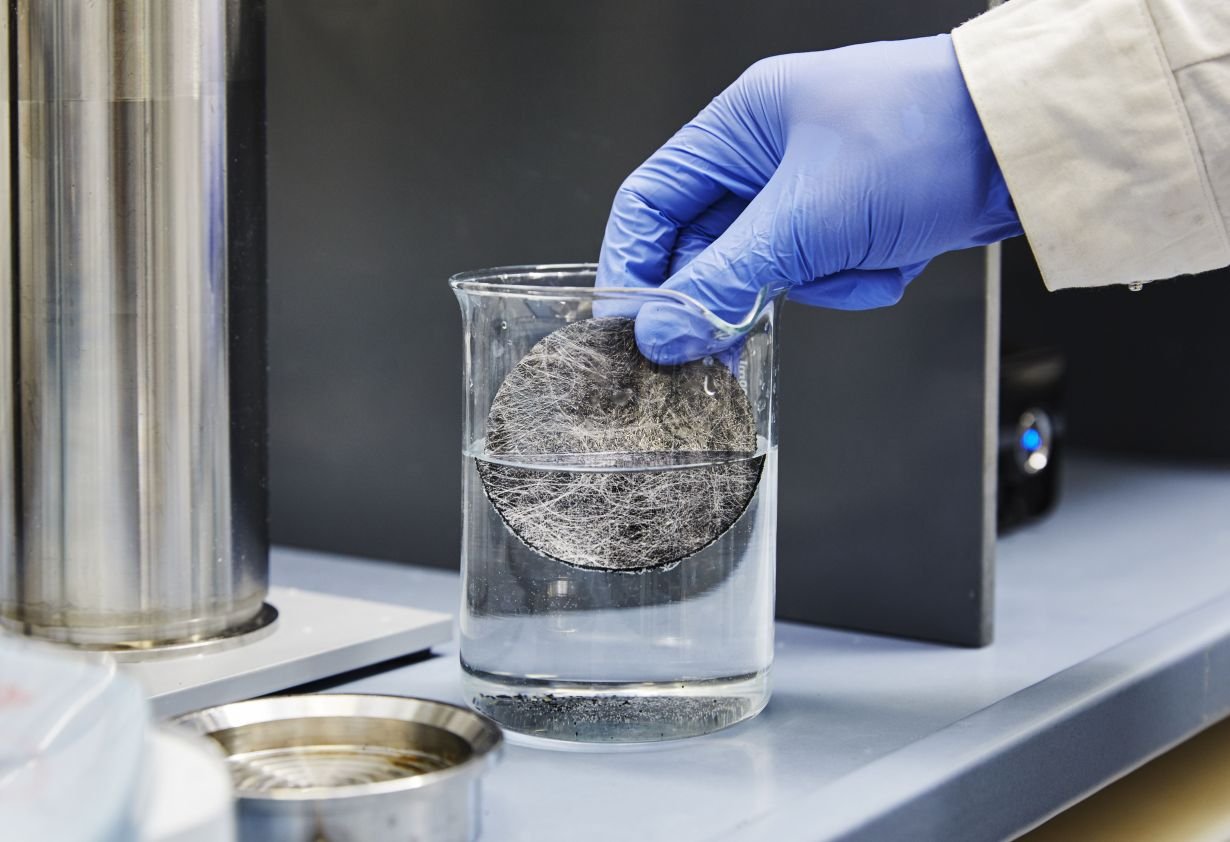
For years micropollutants in water that cannot be removed by conventional methods have posed a global problem. As a result, drinking water is often contaminated with these kinds of pollutants. Steroid hormones are just some of the harmful substances. They end up in wastewater through drugs and contraceptives that people ingest.
While their percentage per liter of water is just a few nanograms, these substances can be harmful to health. Plus they impact the environment, even in these small quantities. However, up until now, they have been difficult to detect. That is due to their low concentrations and tiny sized molecules. Moreover, they cannot be filtered out of the water with conventional purification techniques.
European Commission’s target value has been met
Researchers at the Karlsruhe Institute of Technology (KIT) have now developed an innovative filtration system. This combines a polymer membrane with activated carbon. It is a system that uses exceptionally small carbon particles. Which means that the target value of one nanogram of oestradiol (the physiologically most potent estrogen) per liter stipulated by the European Commission for drinking water can be safely met.
Developed by the KIT researcher for process engineering, Professor Andrea Iris Schäfer, (head of the Institute for Advanced Membrane Technology aka IAMT) and her team, this innovative process for the rapid and energy-efficient elimination of steroid hormones from wastewater uses a polymer membrane combined with activated carbon. “First, the water is forced through the semi-permeable membrane. This filters out larger impurities and microorganisms,” Schäfer explains. “Then the water flows through the layer of carbon particles located behind it. This then binds the hormone molecules to it.”
Related to this topic: New method enables separation of microplastics from wastewater
Researchers at the IAMT have now developed and improved this process in collaboration with the filter manufacturer Blücher GmbH in Erkrath (Germany). They were assisted by scientists from the Institute for Functional Interfaces (IFG), the Institute for Applied Materials (IAM), and the Karlsruhe Nano Micro Facility (KNMF) at KIT. “Our technology now makes it possible to achieve the target value of one nanogram of oestradiol per liter as stipulated by the European Commission for drinking water,” Schäfer reports.
Particle size and oxygen content are decisive
The researchers examined the processes involved in the activated carbon layer more closely. They also used carbon particles (polymer-based spherical activated carbon – PBSAC). “It depends on the diameter of the carbon particles”, clarifies Matteo Tagliavini from IAMT. He was the lead author of the latest publication. This was subsequently published in the journal Water Research. “The smaller the particle diameter, the larger the outer surface of the activated carbon layer that is available for the adsorption of hormone molecules.”
The researchers reduced the particle diameter of a two-millimeter thick activated carbon layer from 640 to 80 micrometers. This enabled them to remove 96 percent of the estradiol contained in water.
According to the scientists, the next step towards further improving the adsorption kinetics and removing more than 99 percent of oestradiol was achieved by increasing the oxygen content in the activated carbon. “The process ensures high levels of water flow at low pressure. It also works in an energy-efficient manner. Plus, it filters out a large number of molecules, produces no harmful by-products, and can be flexibly used in devices of varying sizes – from domestic taps to industrial plants,” Schäfer states.
Original publication: Matteo Tagliavini, Peter Georg Weidler, Christian Njel, Julia Pohl; Dennis Richter, Bertram Böhringer, Andrea Iris Schäfer: Polymer-based spherical activated carbon – ultrafiltration (UF-PBSAC) for the adsorption of steroid hormones from water: material characteristics and process configuration. Water Research, 2020.
Access the abstract via https://doi.org/10.1016/j.watres.2020.116249
Title photo: KIT researchers have developed a filtration system using the tiniest carbon particles that can remove hormones from drinking water. (Photo: Sandra Göttisheim, KIT).








